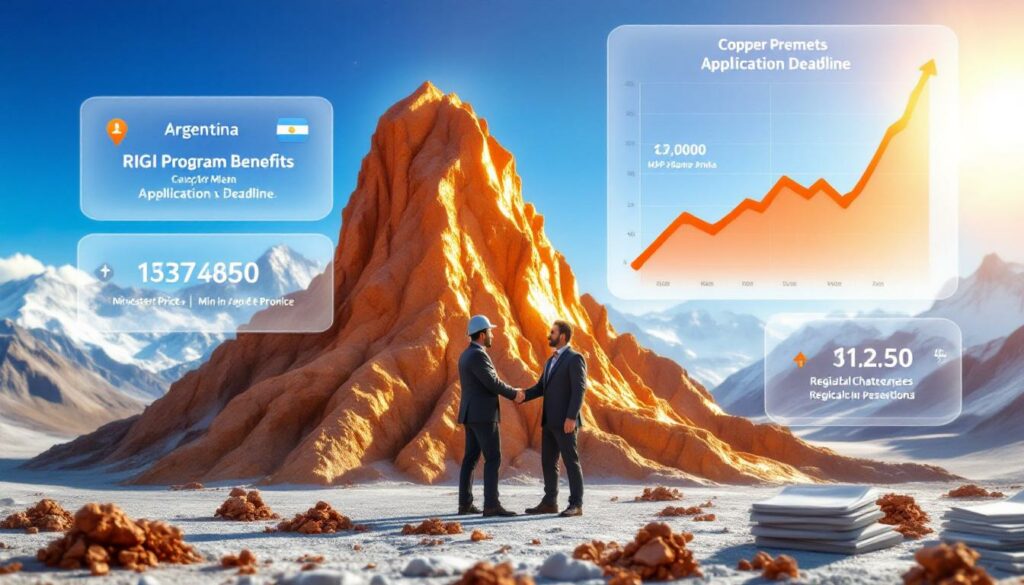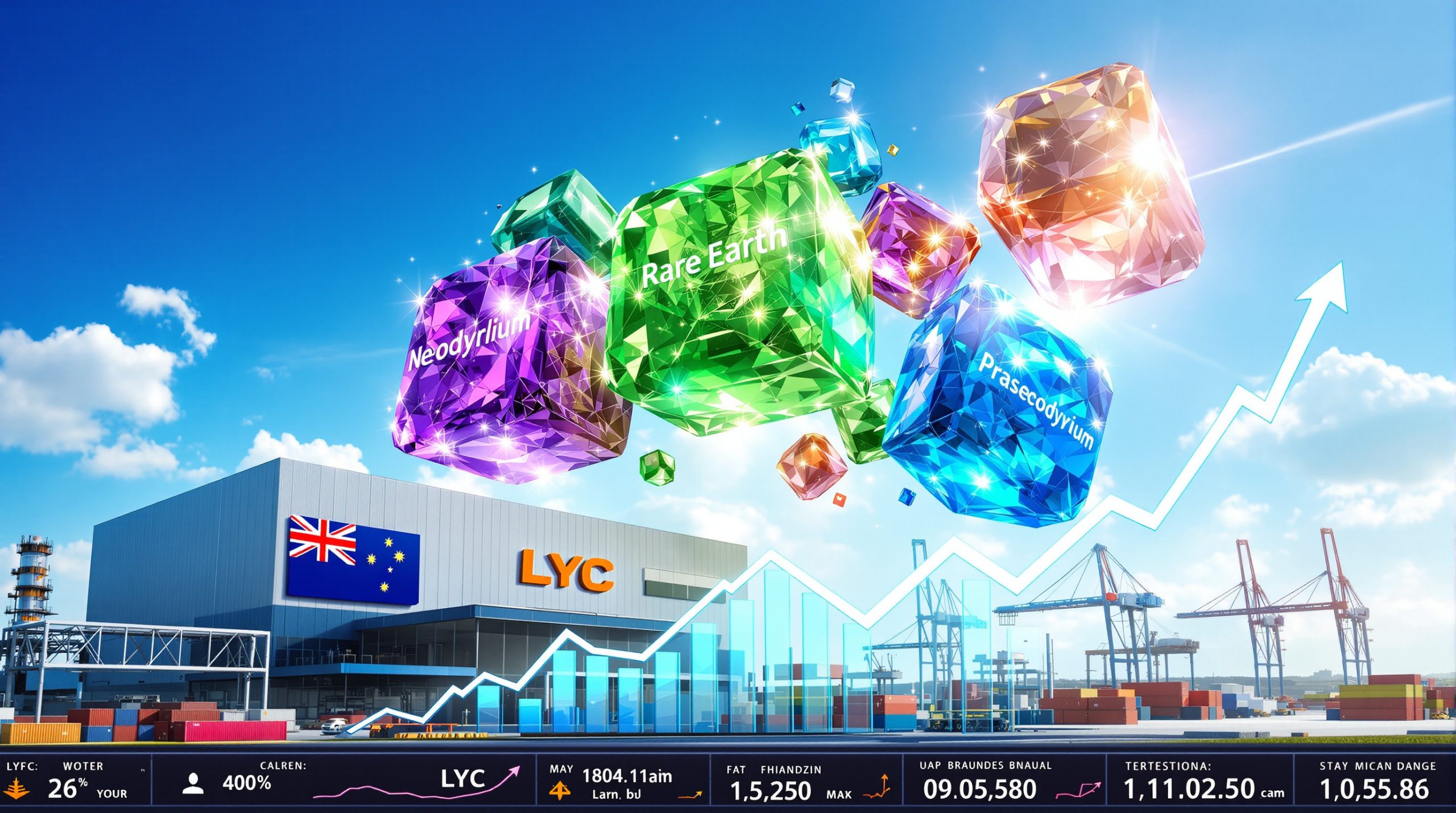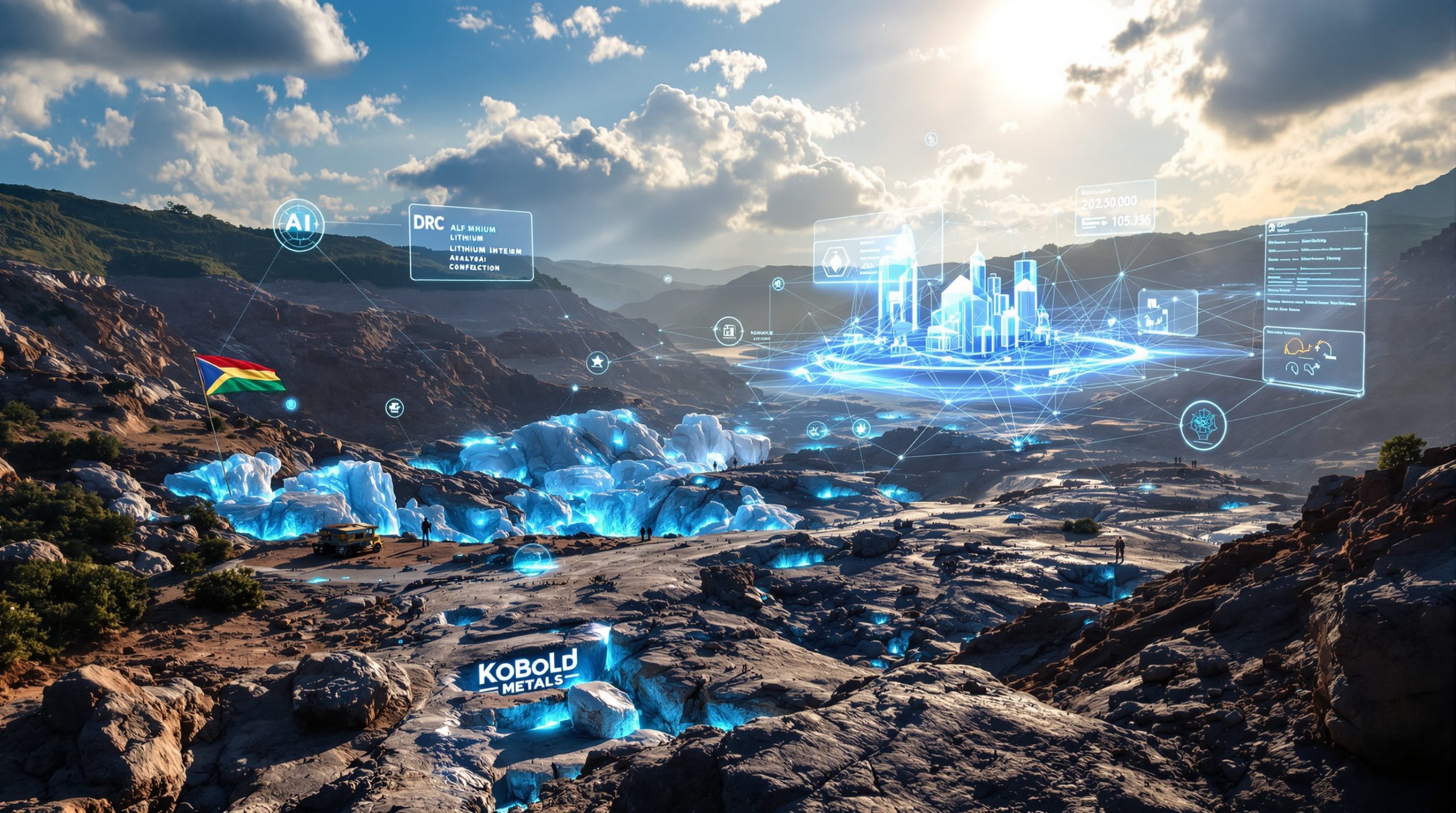Understanding Argentina's Mining Investment Landscape: BHP and Lundin's Strategic Move
As Argentina opens its doors to major mining investments through new incentive programs, industry giants BHP and Lundin Mining are positioning themselves to capitalize on these opportunities while other companies face significant challenges in meeting qualification deadlines. This emerging situation highlights the complex interplay between government policy, corporate strategy, and the global copper price prediction. The strategic decisions being made today will shape Argentina's mining landscape for decades to come.
Argentina's Large Investment Incentive Regime (RIGI): A Game-Changing Initiative
Argentina's Large Investment Incentive Regime (RIGI) represents a bold attempt to attract foreign capital into the country's resource-rich mining sector. Implemented in October 2024 under President Javier Milei's administration, the program aims to provide stability in Argentina's historically volatile economic environment.
The incentive package offers substantial benefits to qualifying investors, including:
- Significant tax breaks over extended periods
- Access to international dispute resolution courts for enhanced investor protection
- Stability provisions that shield investors from certain regulatory changes
- Improved capital control exemptions allowing for profit repatriation
To qualify, mining companies must commit to investments exceeding $200 million—a threshold designed to attract serious, long-term development projects rather than speculative exploration.
Important note: The RIGI application window remains open only through July 2026, with a possible extension to 2027, creating urgency for project developers to advance their plans.
Mining industry participants have widely celebrated this measure as providing much-needed assurance to proceed with copper projects in Argentina's historically volatile economy with its restrictive capital controls. The program represents the first significant boost to Argentina's mining sector in decades.
Economic Context Behind the Initiative
Argentina's decision to implement RIGI comes after years of economic instability that deterred foreign investment in its natural resources sector. The country's challenging macroeconomic conditions—including persistent inflation, currency controls, and political volatility—have historically made it difficult for mining companies to commit to long-term capital investments.
The RIGI program specifically addresses several key barriers:
- Capital control relief: Easing restrictions on moving profits and capital in and out of the country
- Tax predictability: Providing clarity on long-term tax obligations
- Legal protection: Offering international arbitration options to mitigate sovereign risk
- Regulatory stability: Creating a more predictable operating environment
For Argentina, the stakes are high. Successfully attracting major mining investments could generate significant export revenues, tax income, employment opportunities, and economic development in remote regions where many mineral resources are located.
BHP and Lundin's Strategic Positioning of the Vicuna Copper Project
BHP and Lundin Mining are moving decisively to take advantage of Argentina's new investment framework with their jointly-owned Vicuna copper project in San Juan province—a region where most of Argentina's copper projects are concentrated.
Project Timeline and RIGI Application Plans
According to Jose Morea, who leads the Vicuna project, the two companies plan to announce the project's expected investment figures early next year. Speaking at the Argentina Copper 2025 conference in San Juan province, Morea confirmed that Vicuna would file an application in the "short term" for portions of the investment to receive benefits under RIGI.
This timing is strategic, allowing the companies to:
- Finalize their economic assessments and investment plans
- Submit their RIGI application well before the program deadline
- Secure favorable treatment before potential regulatory changes
- Establish a competitive advantage over slower-moving projects
The project partners appear confident in their ability to meet the substantial investment threshold required by RIGI, positioning Vicuna as one of the most advanced copper development opportunities in Argentina.
Strategic Importance of the Vicuna Project
For both BHP and Lundin, the Vicuna project represents more than just another mining investment—it's a strategic positioning in a region with significant untapped copper potential. The partnership demonstrates confidence in Argentina's mining sector despite the country's well-documented economic challenges.
The project aligns with BHP's global strategy to increase its copper exposure as the world transitions to renewable energy and electrification, which are expected to drive surging copper demand in coming decades. For Lundin, the project offers expansion opportunities beyond its current operations.
Developing Vicuna under the RIGI framework could provide significant competitive advantages:
- Tax benefits: Reducing the effective tax burden compared to projects that miss the RIGI window
- Regulatory certainty: Locking in more favorable operating conditions
- International protection: Access to dispute resolution mechanisms outside Argentine courts
- Capital flexibility: Greater freedom to manage project finances across borders
The joint venture structure also allows the companies to share development risks while bringing complementary expertise to the complex task of developing a major copper project in Argentina's challenging business environment.
Why Other Mining Companies Are Concerned About Missing the RIGI Opportunity
While BHP and Lundin appear well-positioned to benefit from RIGI, many other mining companies are expressing growing concern about potentially missing out on these crucial incentives due to project timing challenges.
Exploration Stage Projects Face Critical Timing Challenges
The RIGI program's limited application window creates a significant dilemma for earlier-stage projects that aren't yet ready for major capital commitments. This problem is exemplified by Aldebaran Resources' Altar project, which remains in the early exploration stages and is not ready to begin the heavy spending that could qualify for RIGI.
Javier Roberto, who heads the Altar project in Argentina, voiced this concern directly: "How do we manage projects that are a bit behind and face a closing RIGI window—even assuming the national executive grants an extension and we reach June 2027?"
The Altar team aims to present a preliminary economic assessment in September, but this timeline creates substantial pressure to:
- Accelerate technical studies that typically require methodical, time-consuming work
- Make investment decisions with potentially incomplete information
- Secure financing in a compressed timeframe
- Develop project plans that might be suboptimal due to time constraints
These challenges highlight the uneven playing field created by RIGI's limited application window, with early-stage projects potentially placed at a permanent competitive disadvantage.
Current RIGI Application Status Reveals Limited Adoption
The current application status for RIGI benefits reveals a still-developing adoption pattern. To date, only two mining projects have received RIGI benefits, both in the lithium sector rather than copper. Only one copper project—McEwen Mining's Los Azules—has formally applied for the program.
This limited participation stems from several factors:
- Many projects remain in pre-feasibility or earlier stages
- The $200 million threshold eliminates smaller development projects
- Companies need time to adapt their development plans to RIGI requirements
- Uncertainty about application requirements creates hesitation
For projects that miss the RIGI window, the consequences could be lasting—potentially operating under permanently higher tax rates and less favorable investment conditions than competitors who secured incentives.
Additional Challenges Facing Mining Investment in Argentina
While RIGI represents a significant step forward for Argentina's mining investment climate, several other substantial challenges continue to complicate development decisions for international mining companies.
Regulatory Uncertainty and Environmental Legislation
Mining executives have specifically highlighted uncertainty around Argentina's glacier preservation law as another potential investment obstacle. Much of this legislation remains open to interpretation, creating risk for high-altitude projects in the Andes.
As Javier Roberto noted regarding the glacier preservation law: "We need a decree that tells us exactly what's allowed, what's not, and what must be preserved."
This regulatory ambiguity affects mining companies in several ways:
- Planning uncertainty: Difficulty determining which areas are available for development
- Permitting risk: Potential for unexpected restrictions during approval processes
- Legal exposure: Vulnerability to challenges from environmental groups
- Investment hesitation: Reduced willingness to commit capital amid unclear rules
Mining industry representatives continue to advocate for clearer implementing regulations and standardized interpretation guidance to reduce this uncertainty.
Economic and Political Considerations
Beyond specific regulatory issues, Argentina's broader economic challenges continue to influence mining investment decisions. The country's history of economic volatility, including currency devaluations, inflation, and debt crises, creates a challenging backdrop for long-term capital-intensive projects.
Key economic factors affecting mining investment include:
- Currency controls: Restrictions on moving capital in and out of the country
- Inflation impacts: Rapidly rising costs affecting project economics
- Local supply chains: Challenges sourcing equipment and services domestically
- Workforce considerations: Skills availability and labor relations
Political stability also remains a concern for long-term investors, as mining projects typically operate across multiple political cycles. While the current administration has implemented pro-investment policies like RIGI, international mining companies must consider the sustainability of these policies through future administrations.
Impact on the Global Copper Market
Argentina's push to accelerate copper project development comes at a critical time for global copper markets, with many analysts projecting significant supply deficits in the coming decades as electrification drives demand growth.
Strategic Importance of South American Copper Resources
South America's Andean region hosts some of the world's most significant copper resources, with Chile and Peru currently dominating regional production. Argentina's copper potential remains largely untapped, despite sharing the same geological formations that have made its neighbors major global producers.
Projects like Vicuna could play an important role in addressing projected global copper supply forecast gaps. By accelerating development timelines through investment incentives, Argentina potentially positions itself to capture market share during a period of expected high copper prices driven by:
- Renewable energy infrastructure deployment
- Electric vehicle manufacturing growth
- Grid modernization initiatives
- Industrial electrification
Successful development of Argentina's copper resources would add diversity to global supply chains currently concentrated in a limited number of producing regions.
Competitive Positioning Among Copper-Producing Nations
Argentina's RIGI program represents a competitive response to challenges the country faces in attracting mining investment compared to more established copper-producing nations. While Chile and Peru have longer mining histories and more developed infrastructure, Argentina's incentive package aims to overcome historical disadvantages.
The competitive landscape among South American copper producers includes:
| Country | Advantages | Challenges |
|---|---|---|
| Chile | Established mining culture, infrastructure | Water scarcity, rising costs, tax uncertainty |
| Peru | Rich resources, experienced workforce | Political instability, community conflicts |
| Argentina | New incentives, untapped resources | Economic volatility, regulatory uncertainty |
Early movers in Argentina's copper sector gain significant competitive advantages through RIGI's tax benefits, potentially creating lasting cost structure differences compared to later entrants. This dynamic could reshape regional production economics over the coming decades.
Strategic Options for Mining Companies Navigating RIGI Limitations
For mining companies with projects at earlier development stages, the RIGI timeline creates difficult strategic choices that require careful consideration of technical, financial, and regulatory factors.
Approaches for Projects at Earlier Stages
Companies with exploration or early-stage development projects in Argentina can consider several strategies to navigate RIGI limitations:
- Accelerate technical studies where feasible without compromising quality
- Phase investments to qualify initial development stages under the current window
- Seek strategic partners with financial capacity and experience to accelerate timelines
- Engage in industry advocacy for program extension beyond current deadlines
- Evaluate alternative structures that might qualify partial investments for benefits
Each approach involves tradeoffs between speed, project optimization, and risk management. Companies must carefully balance the potential tax advantages of RIGI qualification against the risks of rushing development decisions.
Disclaimer: Mining development strategies should be evaluated by qualified professionals considering specific project circumstances. Accelerating development timelines may involve additional technical and financial risks.
Importance of Proactive Regulatory Engagement
Given the complex regulatory environment, mining companies operating in Argentina benefit from proactive engagement with government authorities at multiple levels. This engagement should focus on:
- Seeking clarity on interpretation of environmental regulations
- Building relationships with local communities to strengthen project support
- Participating in industry associations to address common challenges
- Maintaining open communication channels with regulatory agencies
Companies that develop effective government and community relations strategies often navigate regulatory processes more successfully, particularly in complex areas like glacier protection regulations.
Argentina's Mining Future: Balancing Opportunity and Challenge
Argentina's push to accelerate mining investment through RIGI and other initiatives has the potential to transform the country's position in global mineral markets, but success depends on effectively addressing both economic and regulatory challenges.
Potential Economic Impact of Major Mining Developments
Successful implementation of Argentina's mining investment strategy could generate substantial economic benefits, including:
- Export revenue: Increased foreign currency earnings to support economic stability
- Employment creation: Direct and indirect jobs in mining regions with limited economic alternatives
- Infrastructure development: Roads, power systems, and other facilities that benefit broader communities
- Supply chain growth: Development of local businesses supporting mining operations
- Tax generation: Long-term revenue streams for national and provincial governments
The scale of these benefits depends on how many major projects ultimately reach development, with each large copper mine potentially representing billions in investment and decades of economic activity.
Balancing Investment Attraction with Regulatory Oversight
Argentina's challenge moving forward involves maintaining environmental standards and community protections while creating an attractive investment environment. This balance requires:
- Transparent and consistent application of regulations
- Clear guidelines for environmental assessment and protection
- Stable fiscal frameworks that provide fair returns to investors and the state
- Meaningful engagement with communities affected by mining activities
By addressing regulatory uncertainty while maintaining appropriate oversight, Argentina can potentially establish itself as a destination for responsible mineral exploration in copper that delivers both economic benefits and environmental safeguards.
Frequently Asked Questions About Argentina's Mining Investment Landscape
How does Argentina's RIGI program compare to mining incentives in other countries?
Argentina's RIGI program offers substantial tax advantages compared to standard mining fiscal regimes in many countries. However, Chile and Peru maintain more established mining sectors with developed infrastructure and proven operational track records. The $200 million threshold is relatively high compared to many comparable programs, targeting only major development projects rather than smaller operations or exploration.
What happens to projects that miss the RIGI application deadline?
Projects unable to qualify before the deadline would operate under standard Argentine tax and regulatory frameworks, potentially facing higher effective tax rates and less favorable investment conditions than early adopters who secured RIGI benefits. This could create lasting competitive disadvantages affecting project economics and development decisions.
How significant is the glacier preservation law to mining development?
The glacier preservation law creates substantial uncertainty for high-altitude mining projects in Argentina's Andes region, with potential restrictions on development activities near glacial areas. Industry leaders continue seeking clearer guidelines to determine project viability in these sensitive regions, as the law's interpretation significantly impacts land availability for development.
What copper projects are currently being developed in Argentina?
Besides the Vicuna project (BHP/Lundin) and the mentioned Altar (Aldebaran Resources) and Los Azules (McEwen Mining) projects, Argentina hosts several other copper exploration and development opportunities at various stages. Many face similar challenges regarding regulatory clarity and investment timelines, with varying abilities to meet RIGI qualification deadlines.
Further Exploration
Readers interested in learning more about mining industry evolution can explore additional perspectives on copper project development in South America through industry publications, government resources, and academic research on South American mining economics.
Want to Spot the Next Major Mining Discovery First?
Gain an immediate edge on significant ASX mineral discoveries with Discovery Alert's proprietary Discovery IQ model, which instantly identifies high-potential announcements before the broader market reacts. Explore how past discoveries have delivered exceptional returns by visiting the dedicated discoveries page and position yourself ahead of other investors.




